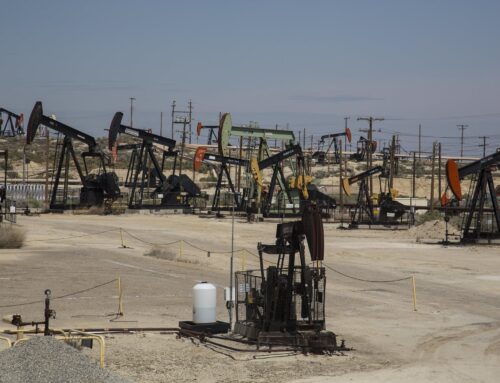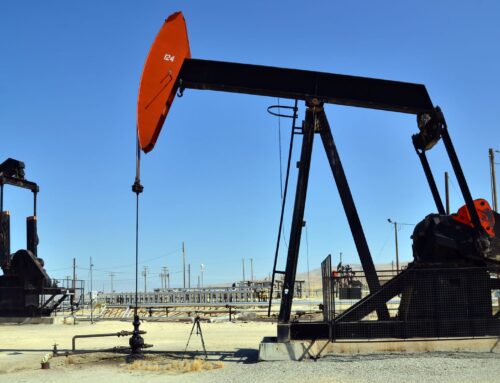Director (630) Bureau of Land Management
Comments to the Bureau of Land Management (BLM) on the Oil and Gas Leasing; Royalty on Production, Rental Payments, Minimum Acceptable Bids, Bonding Requirements, 80 F.R. 22148 (April 21, 2015) Thank you for this opportunity to comment on fiscal issues related to onshore oil and gas leasing. The Department of the Interior (DOI)’s Bureau of Land Management (BLM) charges royalties and rent for oil and gas leases on federal lands, sets minimum bonus bids for leases, and establishes bonding requirements for site remediation. BLM is considering changes to the royalty rates, rental payments, minimum bonus bids and bonding requirements. None of these financial requirements has been revised in decades, and numerous GAO reports have raised concerns about whether federal oil and gas development collects a fair return for taxpayers. BLM’s management of oil and gas operations has also been included in GAO’s “high risk” programs list. Onshore Royalty Rates and Periodic Assessments of the Onshore Fiscal System BLM’s current regulations for royalty rates collected from onshore oil and gas leases set a flat rate of 12.5 percent for competitive leases and non-competitive leases. Although BLM is authorized to specify a higher royalty rate, it has not done so. BLM’s failure to raise onshore royalty rates, or to amend the regulations to allow further increases of royalty rate above the minimum by administrative action, represents a significant loss to taxpayers for resources developed on federal lands. This failure also contradicts the agency’s stated goal to “design an oil and gas fiscal system that both ensures that the United States' oil and gas resources are developed and managed in an environmentally-responsible way that meets our energy needs, while also ensuring that the American people receive a fair return on those resources.” 80 F.R. 22150. Fair return to taxpayers is a competitive rate of return – a royalty rate that is consistent with royalty rates charged on state and private lands. As noted in the ANPRM, state and private lessors charge royalty rates higher than 12.5 percent. 80 F.R. 22152. BLM should increase the royalty rate to 18.75 percent for onshore oil and gas production, a rate consistent with federal offshore oil and gas production and the prevailing state and private royalty rates. The ANPRM references two studies, one commissioned by BLM and one by the oil and gas industry, meant to assess the adequacy of the government’s “take” from federal oil and gas leases compared to other resource owners. These studies produced conflicting results because of the complex set of variables involved for comparison. In fact, most of the factors considered are beyond the control of the federal government (e.g. commodity prices, reserve size, reservoir characteristics, resource location and development costs, distance from infrastructure, water depth) and others are fixed (e.g. tax rates). However, BLM does control the royalty rate, and with it, BLM can ensure a fair and competitive return to taxpayers based simply on the comparative rates charged by other landowners, whose leases are also subject to the same economic factors. BLM notes that one of these studies suggested sliding-scale royalty rates, with a higher rate in years when oil prices are higher. Sliding scale rates can create unnecessary complexity and inappropriate economic signals. Sliding rates may discourage production with a higher royalty rate when prices and demand are high, while encouraging production with low rates when demand is low. Sliding scale rates also put taxpayers in the role of investors, trading increased risk for the potential of increased reward. This is an inappropriate position for taxpayers vis-à-vis federal oil and gas leases. Uniform rates ensure the American people receive a fair return on the amount or value of oil and gas production removed or sold from federal leases. Similar to the system in place for offshore federal oil and gas leasing, BLM’s regulations should make it possible to adjust royalty rates for onshore federal oil and gas leases without a full rulemaking, by setting a minimum rate instead of a fixed rate. In a December 2013 report, GAO recommended that the Secretary of the Interior “take steps, within existing authority, to revise BLM’s regulations to provide for flexibility to the bureau to make changes to onshore royalty rates, similar to that which is already available for offshore leases, to enhance Interior’s ability to make timely adjustments to the terms for federal onshore leases.” GAO-14-50 at 29. Any regulatory change should incorporate this recommendation. In accordance with that regulatory approach and GAO recommendations, BLM should then review the oil and gas fiscal system every 5-10 years and ensure that rates charged on federal lands are comparable with rates charged on state and private lands, and offshore federal leases. In its February 2015 “High Risk” report, GAO noted that “to address its revenue collection challenges, Interior needs to continue meeting its time frames for updating regulations related to oil and gas measurement and onshore royalty rates.” GAO-15-290 at 99. Those time frames should include both prompt action on regulatory changes consistent with these comments on the ANPRM, and regular regulatory review thereafter. Annual Rental Payments DOI’s rule for charging rental payments on federal onshore oil and gas leases has not been updated since 1987, when rates were set at “$1.50 per acre in the first five years of a lease, and $2.00 per acre for each year thereafter.” 43 C.F.R. 3103.2-2. These payment requirements should at the least be raised to follow inflation, and adjusted annually by regulation. According to the Bureau of Labor Statistics inflation calculator, $1.50 in 1987 is now $3.12, and $2.00 is now $4.17. An immediate increase in rental rates to these levels would not only increase income to ensure fair return to taxpayers, but would also create incentive for timely development rather than speculation on federal leases. In addition, BLM should conduct an analysis of the value of lands and leases in various regions, and consider adjusting the rental fees upward in areas where leases are more valuable, as the offshore oil and gas program has done. Minimum Acceptable Bid As the ANPRM states, the starting bid for any auction for onshore oil and gas leases should ideally be set at a level to ensure a fair financial return for U.S. taxpayers. 80 F.R. 22153. Current rules allow that “the Secretary may establish by regulation a higher national minimum acceptable bid for all leases based upon a finding that such action is necessary: (i) to enhance financial returns to the United States; and (ii) to promote more efficient management of oil and gas resources on Federal lands.” 30 U.S.C. 226(b)(1)(B). However, the current minimum bid of $2.00 per acre has not changed since the regulation was adopted in 1987. 43 C.F.R. 3120.1-2. The offshore oil and gas leasing system requires that the minimum bid be sufficient to cover value of resources, which is a better system than onshore, where the $2.00 minimum is not based on value. BLM also acknowledges in this ANPRM that “most parcels sell for well in excess of the current minimum acceptable bid, which may suggest the current minimum acceptable bid could be higher.” 80 F.R. 22153. The agency should increase the minimum bid to at least equal inflation since the $2.00 bid was adopted. In addition, BLM should study what level of minimum bid will lead to decreased bidding, and adopt a minimum bid that ensures a minimal increase in non-competitive leasing but also ensures the recovery of full value for taxpayers. Unfortunately, BLM cannot ensure that full market value is received on onshore oil and gas leases so long as the non-competitive leasing alternative remains in the Mineral Leasing Act. If no bid is received in an initial auction for whatever reason, the agency must offer a non-competitive lease with no bonus bid, regardless of the known mineral value of the lease. This deprives the taxpayers of the full value of the resource. Therefore, the agency should also seek a legislative change to eliminate this requirement, which offers potential lessees an incentive to game the system and attempt to obtain a lease with no bonus payment. Bonding The ANPRM also raises the possibility of adjusting bonding requirements for federal onshore oil and gas leases. The Secretary is currently authorized to “ensure that an adequate bond, surety, or other financial arrangement will be established prior to the commencement of surface-disturbing activities on any lease, to ensure the complete and timely reclamation of the lease tract, and the restoration of any lands or surface waters adversely affected by lease operations after the abandonment or cessation of oil and gas operations on the lease.” 30 U.S.C. 226(g). However, BLM’s bond amounts are not based on the full reclamation costs for each site that would be incurred by the government if an operator were to fail to complete the required reclamation. Instead, BLM’s onshore oil and gas bonds are based on regulatory minimums intended to ensure that the operator complies with all the terms of the lease. This approach is inconsistent with other federal bonding systems. GAO-10-245. GAO notes that “bonding requirements for the extraction of coal and hardrock minerals—such as gold, silver, and copper—require operators to post bonds that cover the full estimated cost of reclamation. These requirements reduce the potential reclamation liability to the federal government should the operations fail to perform the necessary reclamation.” GAO-10-245 at 24. Other federal bonding systems, such as those for gold, silver and copper have been updated since BLM established its current regulatory minimums for oil and gas leases in 1960 — but requirements for oil and gas leases have not been adjusted since. The BLM oil and gas bonding policy should be changed to cover all potential reclamation costs, and ensure that lessees meet their duty to protect taxpayers from financial risk. In addition, BLM should consider adjusting bond requirements automatically with inflation, and evaluate whether anticipated reclamation costs should vary based on well depth. Conclusion Revenues from the collection of fees from oil and gas lesees represent one of the largest non-tax income sources for the federal government. The federal onshore oil and gas leasing system needs to be updated in order to ensure taxpayers a return for resources developed on public lands. Adjusting policies for royalties, rent, minimum bonus bids, and bonds are all necessary to address GAO concerns and protect taxpayers. Citations 80 F.R. 22150. Oil and Gas Leasing; Royalty on Production, Rental Payments, Minimum Acceptable Bids, Bonding Requirements, and Civil Penalty Assessments. 21 April 2015. 80 F.R. 22152. Oil and Gas Leasing; Royalty on Production, Rental Payments, Minimum Acceptable Bids, Bonding Requirements, and Civil Penalty Assessments. 21 April 2015. GAO-14-50 at 29. Oil and Gas Resources: Actions Needed for Interior to Better Ensure a Fair Return. 17 December 2013. GAO-15-290 at 99. High-Risk Series: An Update. 11 February 2015. 43 C.F.R. 3103.2-2. Payment of Annual Oil and Gas Lease Fees. 16 May 1988 80 F.R. 22153. Oil and Gas Leasing; Royalty on Production, Rental Payments, Minimum Acceptable Bids, Bonding Requirements, and Civil Penalty Assessments. 21 April 2015. 30 U.S.C. 226(b)(1)(B). Lease of Oil and Gas Lands. 3 January 2012 43 C.F.R. 3120.1-2. Competitive Leases. 80 F.R. 22153. Oil and Gas Leasing; Royalty on Production, Rental Payments, Minimum Acceptable Bids, Bonding Requirements, and Civil Penalty Assessments. 21 April 2015. 30 U.S.C. 226(g). Lease of Oil and Gas Lands. 3 January 2012 GAO-10-245. Oil and Gas Bonds: Bonding Requirements and BLM Expenditures to Reclaim Orphaned Wells. 26 February 2010. GAO-10-245 at 24. Oil and Gas Bonds: Bonding Requirements and BLM Expenditures to Reclaim Orphaned Wells. 26 February 2010.
### 651 Pennsylvania Ave, SE • Washington, DC 20003 • Tel: (202) 546-8500 • www.taxpayer.net |
Photo credit: eschipul via flickr











